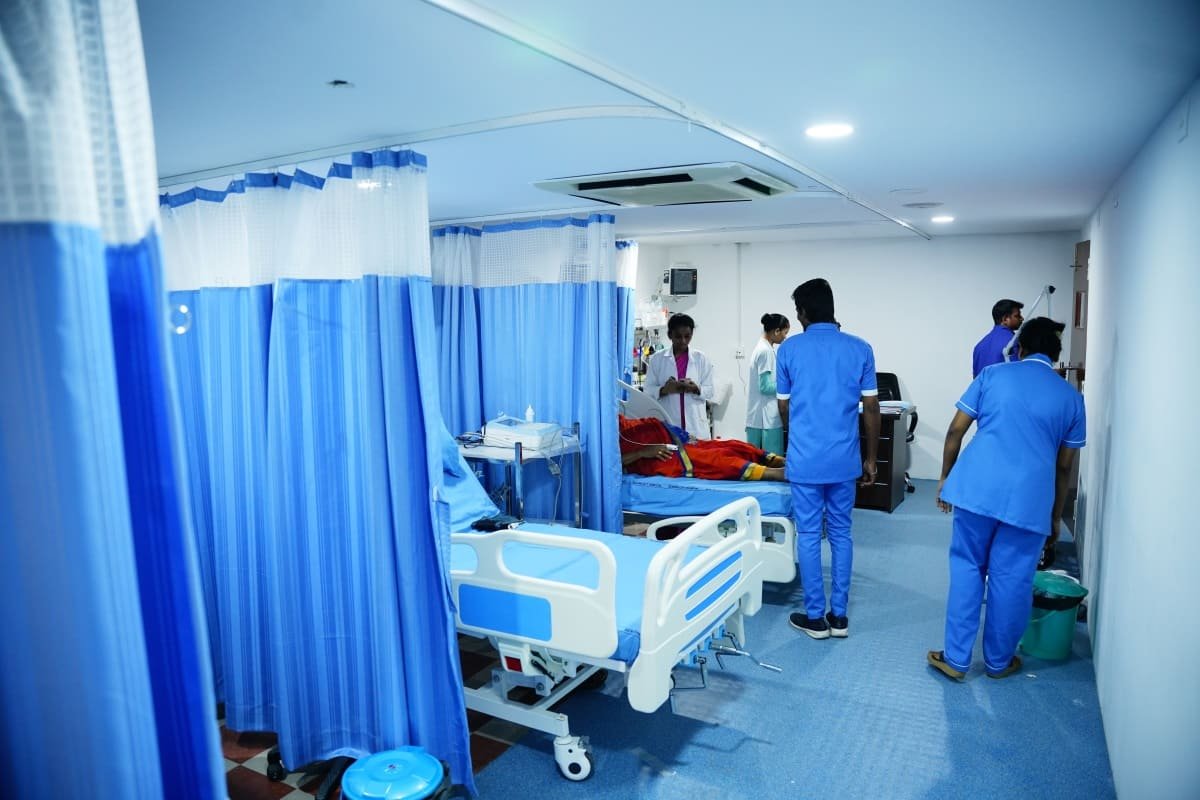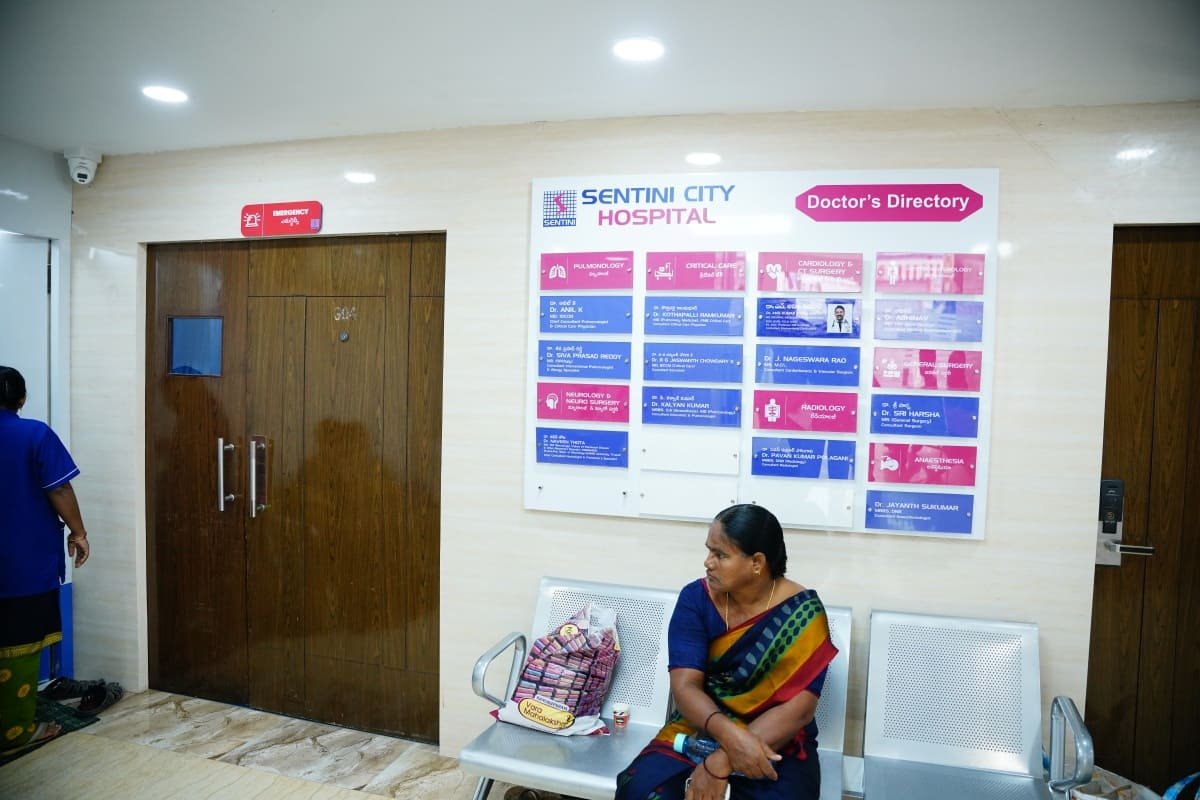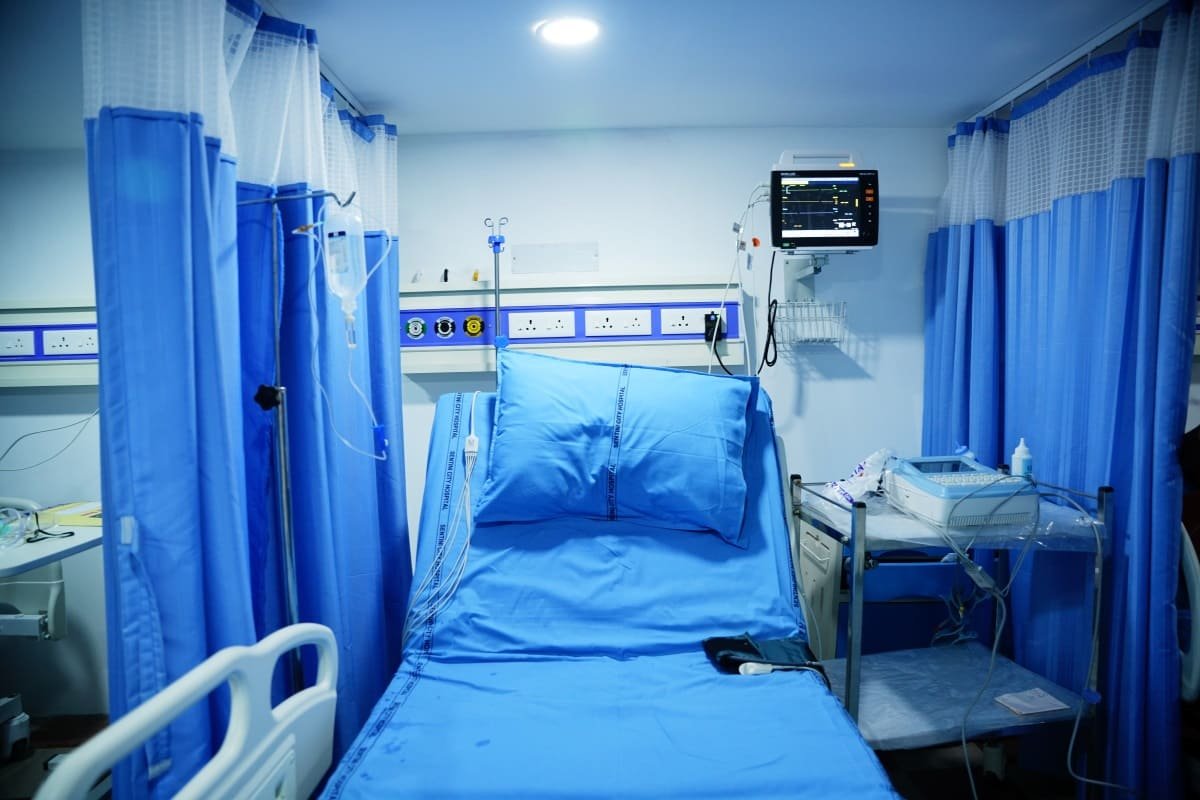The Game-Changer: Unparalleled Medical Expertise at the Best & Critical Care Hospital
Introduction
Sentini City Hospitals play a crucial role in saving lives and providing top-notch medical care in high-stakes situations mainly during emergency. In these critical moments, unparalleled medical expertise becomes a game-changer, making all the difference in transforming patient outcomes. This blog post explores how the best emergency & critical care hospitals achieve unparalleled medical expertise through their game-changing practices.
Investment in Cutting-Edge Technology
The best emergency & critical care hospitals leave no stone unturned when it comes to investing in cutting-edge technology. By leveraging advanced imaging and diagnostics, these hospitals ensure accurate and timely diagnoses for patients in critical conditions.
Utilizing High-Resolution Imaging Techniques
The usage of high-resolution imaging techniques, such as MRI and CT scans, allows doctors to identify internal injuries and conditions with exceptional precision. These techniques enable medical professionals to make informed decisions quickly and accurately, improving patient outcomes.
Rapid and Accurate Diagnoses Enabled by State-of-the-Art Technology
State-of-the-art technology, such as real-time imaging and diagnostic tools, provides emergency & critical care hospitals with the ability to diagnose conditions rapidly and accurately. This enables medical teams to administer the most appropriate treatment promptly, significantly enhancing patient outcomes.
Enhanced Precision through Advanced Diagnostic Tools
Advanced diagnostic tools, like ultrasound machines and endoscopes, offer enhanced precision during procedures. They allow medical professionals to precisely locate and treat conditions, improving the efficacy of treatment and reducing the risk of complications.
Revolutionary Treatment Approaches
The best emergency & critical care hospitals pioneer revolutionary treatment approaches that are both effective and minimally invasive. These approaches aim to facilitate a speedy recovery, ensuring the best possible outcomes for patients.
Minimally Invasive Interventions for a Speedy Recovery
By employing minimally invasive interventions, such as laparoscopic surgery and interventional radiology, hospitals can reduce patient discomfort, minimize scarring, and accelerate the recovery process. This game-changing approach allows patients to regain their health quickly.
Precision Medicine and Personalized Treatment Plans
The implementation of precision medicine enables emergency & critical care hospitals to customize treatment plans based on an individual's unique genetic makeup, lifestyle, and medical history. This personalized approach ensures optimal treatment outcomes and minimizes the risk of adverse reactions.
Integration of Robotics and Automation in
The incorporation of robotics and automation in surgical procedures revolutionizes the way complex surgeries are performed. These technological advancements enable surgeons to perform intricate procedures with unparalleled precision, reducing post-operative complications and facilitating faster recovery.
Data-Driven Decision Making
To achieve unparalleled medical expertise, the best emergency & critical care hospitals rely on data-driven decision-making processes. By leveraging real-time monitoring, predictive analytics, and collaboration between medical experts and data scientists, hospitals can make informed and precise decisions for each patient's unique case.
Real-Time Monitoring and Predictive Analytics
Real-time monitoring of patient vital signs and predictive analytics help medical teams identify and address potential complications before they escalate. This proactive approach allows for early interventions and improves patient outcomes.
Harnessing Big Data for Improved Patient Outcomes
Emergency & critical care hospitals leverage the power of big data to analyze vast amounts of patient information, identifying patterns and trends that can inform treatment strategies. This data-driven approach enhances diagnostic accuracy, treatment recommendations, and patient management.
Collaboration between Medical Experts and Data Scientists
Collaboration between medical experts and data scientists enables the interpretation and analysis of complex medical data. By working together, these professionals uncover valuable insights that can lead to groundbreaking innovations in emergency and critical care medicine.
Specialized Expertise and Collaborative Approach
The best emergency & critical care hospitals foster a collaborative approach and embrace the expertise ofisciplinary medical teams. This collaborative environment enhances patient care and brings together expertise various specialties for complex cases.
Comprehensive and Coordinated Patient Care
A multidisciplinary approach ensures comprehensive and coordinated patient care, where different medical specialists work together to address all aspects of a patient's condition. This holistic approach leads to optimal treatment plans and improved patient outcomes.
Collaboration between Specialists for Complex Cases
Emergency and critical care hospitals bring together specialists from different medical fields to collaborate on complex cases. By pooling their expertise, these specialists find innovative solutions and deliver the highest standard of care to patients with intricate medical conditions.
Holistic Approach to Treatment for Optimal Results
The best emergency & critical care hospitals adopt a holistic approach that goes beyond just medical treatments. They prioritize the emotional and psychological well-being of patients, recognizing the interconnectedness between mental and physical health. This comprehensive approach enhances the healing process and promotes long-term well-being
Continuous Education and Training
To maintain unparalleled medical expertise, the best emergency & critical care hospitals emphasize continuous education and training for their medical professionals. By staying ahead with the latest medical advancements and collaborating with research institutes, these hospitals are at the forefront of cutting-edge practices.
Staying Ahead with the Latest Medical Advancements
By providing their medical professionals with access to continuous education and training programs, emergency & critical care hospitals ensure that their staff remains up to date with the latest medical advancements. This commitment to ongoing learning directly translates into improved patient care.
Promoting a Culture of Lifelong Learning for Medical Professionals
The best emergency & critical care hospitals foster a culture of lifelong learning, encouraging their medical professionals to pursue additional certifications, attend conferences, and engage in research activities. This commitment to constant growth and development significantly enhances the expertise of the medical staff.
Collaboration with Research Institutes to Promote Cutting-Edge Practices
To stay at the forefront of medical expertise, emergency & critical care hospitals actively collaborate with research institutes. This collaboration enables the hospitals to contribute to and benefit from groundbreaking research, ultimately improving patient outcomes through the implementation of cutting-edge practices.
Industry-Leading Professionals
The best emergency & critical care hospitals pride themselves on housing world-class specialists and surgeons who possess the highest standards of medical credentials and experience. These professionals are continuously evaluated, fostering a culture of ongoing quality improvement and ensuring unparalleled medical expertise.
World-Class Specialists and Surgeons
Emergency & critical care hospitals attract and retain world-class medical professionals who specialize in emergency medicine, critical care, trauma, and related fields. These specialists bring their expertise, talent, and dedication to ensuring the best possible care for patients in critical situations.
High Standards of Medical Credentials and Experience
To maintain unparalleled medical expertise, emergency and critical care hospitals maintain rigorous standards for medical credentials and experience. This commitment to excellence ensures that patients receive treatment from the most qualified professionals in the field.
Ongoing Quality Evaluation and Improvement Initiatives
Emergency & critical care hospitals continually evaluate and improve their quality of care through internal audits, peer reviews, and patient feedback. By monitoring performance and implementing improvement initiatives, these hospitals consistently provide exceptional medical expertise.
State-of-the-Art Facilities and Infrastructure
The best emergency & critical care hospitals boast state-of-the-art facilities and infrastructure that support the delivery of unparalleled medical expertise. Well-equipped emergency departments, advanced critical care units, and patient-centric environments create an optimal healing environment for patients.
Well-Equipped Emergency Departments
Emergency departments in the best hospitals are equipped with advanced life support facilities, ensuring immediate intervention in critical situations. These departments have access to high-quality emergency care equipment and resources, enabling prompt and efficient patient management.
Advanced Critical Care Units
Critical care units in top-notch hospitals are equipped with cutting-edge intensive care technology, such as ventilators, cardiac monitors, and dialysis machines. Trained critical care specialists and nurses provide round-the-clock care, ensuring patients receive the highest level of medical attention.
Integration of Telemedicine for Remote Monitoring and Consultations
Emergency & critical care hospitals leverage telemedicine to enable remote monitoring and consultations, especially for patients in remote areas or those unable to travel. This integration facilitates continuous and timely communication between medical professionals and their patients, ensuring the provision of unparalleled medical expertise.
Patient-Centric Environment
The best emergency & critical care hospitals aim to create a patient-centric environment, recognizing that emotional well-being plays a vital role in the healing process. They provide comfortable and supportive facilities for patients and their families, allowing for a more positive experience in the midst of challenging circumstances.
Emphasis on Emotional Well-being during Critical Care
Emergency & critical care hospitals prioritize emotional well-being by offering specialized support services, such as counseling and mental health resources, to patients and their families. This holistic approach considers the impact of emotional well-being on patient outcomes and ensures comprehensive care.
Patient Engagement and Shared Decision-Making
Emergency & critical care hospitals actively engage patients in their treatment plans and decisions. They foster an environment of shared decision-making, empowering patients to actively participate in their care and ensuring that their preferences and values are respected.
Summary
In this article, we explored how the best emergency & critical care hospitals provide unparalleled medical expertise. We discussed the significant role of cutting-edge technology, specialized expertise, and state-of-the-art facilities in transforming patient outcomes. By investing in advanced imaging and diagnostics, revolutionary treatment approaches, data-driven decision-making, and a collaborative approach, these hospitals ensure the highest level of care. Additionally, their state-of-the-art facilities and patient-centric environments create an optimal healing environment.
Frequently Asked Questions (FAQs)
1.How do advanced imaging techniques contribute to better patient outcomes?
Advanced imaging techniques, such as MRI and CT scans, allow doctors to accurately diagnose and treat various medical conditions. By providing detailed and precise images of internal organs and structures, these techniques enable medical professionals to make informed decisions, leading to improved patient outcomes.
2. What is the significance of multidisciplinary medical teams in emergency and critical care settings?
Multidisciplinary medical teams ensure comprehensive patient care by bringing together experts from various specialties. This collaborative approach facilitates better coordination, faster decision-making, and improved treatment outcomes for patients facing complex or critical medical conditions.
3. How does continuous education and collaboration with research institutes improve medical expertise?
Continuous education and collaboration with research institutes allow medical professionals to stay updated with the latest advancements in their field. By embracing lifelong learning and actively participating in research, medical experts can enhance their knowledge and skills, ultimately improving the quality of care they provide.
4. What makes a critical care unit state-of-the-art?
A state-of-the-art critical care unit is equipped with advanced intensive care technology, including life support systems, monitoring devices, and specialized equipment. It also has dedicated critical care specialists and nurses who possess specialized training in managing critical patients. These units employ the latest practices and protocols to deliver the highest level of care to patients.
5. How does a patient-centric environment enhance the healing process?
A patient-centric environment prioritizes the emotional well-being and comfort of patients and their families. By providing a supportive and empathetic atmosphere, emergency & critical care hospitals promote better patient experiences and reduce stress levels. This patient-centered approach fosters a positive healing environment and contributes to improved patient outcomes.
.jpg)







